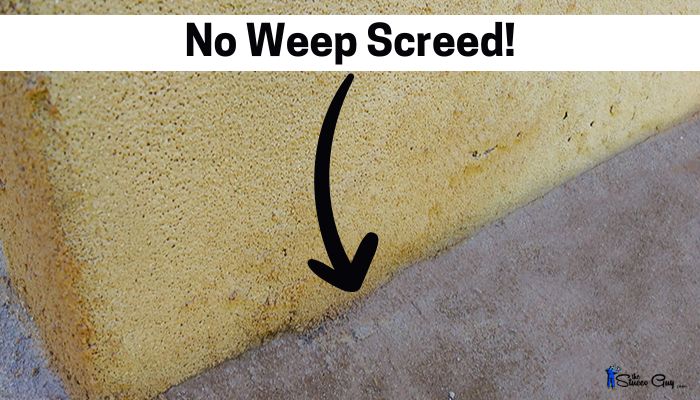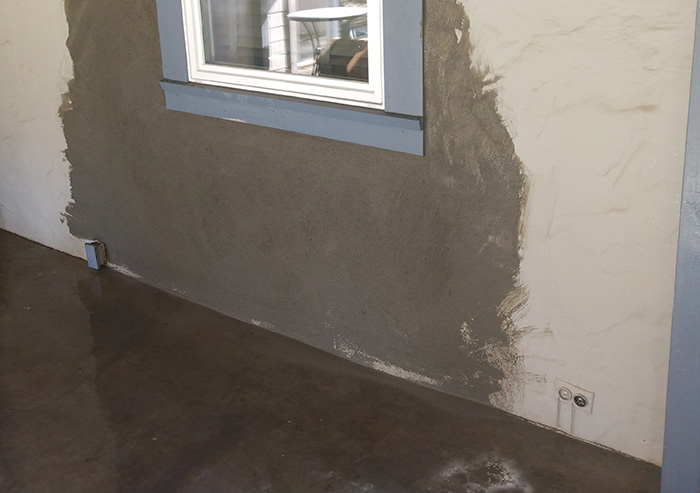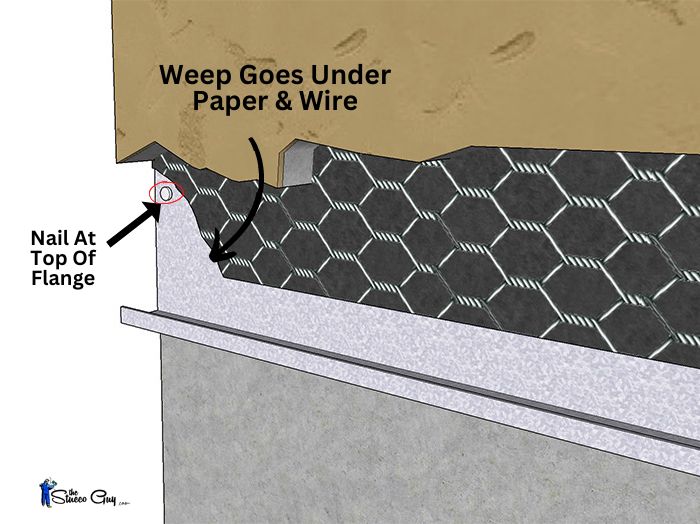
There are a ton of houses being built nowadays and many more have been built in the past and many of these older homes have been built with no weep screed at the bottom of the walls.
You may have just purchased a home that has this exact situation or maybe you're looking at one that does not have any installed, either way, you need to know a little about this scenario so you are properly informed.
What Does Weep Screed Do?
Weep screed is a metal flashing that runs along the bottom of your walls and has small holes in the bottom of it that allows any moisture that was absorbed by the stucco to weep out. I have a more thorough article on what weep screeds are and how they are used.
It also acts as a screed for the base coats and finish coats of the stucco itself, providing a depth gauge. It also acts as a flashing material that adds an extra layer of protection to any wood surfaces like the framing and sheathing.
What Can Happen If No Weep Screed Was Installed?
Now that we know what weep screed does and a little on how it works, we can talk about what could happen if it is not installed.

* Note: This section is talking about what could potentially happen and does not necessarily mean it will happen. Too many variables come into play to give a definitive "problematic or non-problematic" answer to this type of situation. I just want to provide all of the information I can on the subject.
Water Not Being Able To Weep Out: Since one of the main functions of the weep screed is to allow water that enters the stucco (porous material that absorbs quite well) to weep out, not having this piece of metal along the bottom of the wall could potentially lead to water intrusion in parts of the wall of the entire wall.
This is mainly because it sits there longer and has to rely on evaporation to remove the excess moisture that gets trapped behind the wall, which is a slower process, compared to the water just wicking out of the weep holes.
Stucco's Porosity: Since stucco is a cement based material (either the base coats and/or the finish coats) that soaks up moisture like a sponge, it will soak up whatever moisture is present.
Buildings that did not have weep screed installed will usually have the stucco ran all the way down the wall, from the roof rafters, all the way down to the dirt, concrete, asphalt or other surfaces that were installed.
The stucco can and will soak up the moisture in that area and can travel upwards as it collects more and more moisture from the ground, eventually making its way up to wooden parts of the home.
Control Joint: The weep screed also acts as kind of a control joint as well, making a nice straight transition from the wood framing portions of a building to the concrete foundation.
Without this transitional piece of metal in place, this area where two dissimilar materials meet is more prone to cracking, allowing moisture inside at a faster rate, with the potential to overwhelm the paper that is underneath.
This is especially true on older homes where a thinner, single ply paper water resistive barrier was used. I have seen many issues resulting from this thinner paper failing due to moisture intrusion on older homes.
What Are My Options If I Have No Weep?
If you have a home that does not have weep screed installed, you really have two options. You could either leave it the way it is or install weep screed to your existing stucco walls.
Leaving It The Way It Is: This is the "hopeful" approach and many people have not had any problems with moisture intrusion inside their homes by not having any weep installed.
This is a very broad statement on my part though and different variables will come into play, three of the most influential being where you live and more specifically the amount of moisture (via rainfall, wind, humidity, etc.) you typically experience, how much the foundation sticks out of the ground and which walls get the majority of the incoming storms.
This can be tricky to verify that there is no moisture present though, as a visual inspection is usually the only verifiable method that I think most people use to determine this.
On the other hand, if no moisture is visibly present on the inside of your home, why spend the money to install weep screed that could cost a significant amount of money and not fix an issue that never existed.
Installing New Weep Screed: This is obviously the more proactive approach but will come at a cost and sometimes a pretty significant cost if you have a large home or intricate foundation layout. Other problems could also come up during the installation process that could add to these expenses that will also need to be addressed at the same time.


